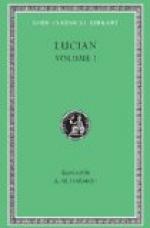The history of the Indians in New York State is a very interesting one. Prior to the discovery of America by Columbus, the section of country including a majority of New York State and the northern portion of Pennsylvania, was occupied by the Iroquois, Mohawks, Oneidas, Onondagas, Cayugas and Senecas. These formed the historical Five Nations, of whom writers of the last century tell us so much that is of lasting importance. These tribes were self-governed, their rulers being selected on the hereditary plan. There was a federal union between them for purposes of offense and defense, and they called themselves, collectively, the “People of the Long House.” This imaginary house had an eastern door at the mouth of the Mohawk River, and a western door at the Falls of Niagara.
Bashfulness was not a characteristic of these old-time red men, who had a special name of many letters for themselves, which, being interpreted, meant “Men surpassing all others.” They trace their origin from the serpent-haired God, Atotarhon, and other traditions attribute their powers of confederation and alliance to the legendary Hiawatha. They built frame cabins and defended their homes with much skill. Their dress was chiefly made out of deer and elk hide, and relics still in existence show that they had good ideas of agriculture, tanning, pottery, and even carving. They were about 12,000 strong, and they appear to have been the most powerful Indian combination prior to the arrival of the white man.
They were powerful in war as well as comparatively sensible in peace. Their religion was, at least, consistent, and included a firm belief in immortality. They maintained what may be termed civilized family relations, and treated their women with proper respect. Their conduct towards the white men was much more friendly than might have been expected, and almost from the first they displayed a conciliatory attitude, and entered into alliances with the newcomers. They fought side by side with the New Englanders against the French, and the hostile Indians who allied with them, and in the year 1710, five of their sachems or legislators crossed the Atlantic, and were received with honors by the Queen of England. In diplomacy they did not prove themselves in the long run as skillful as the newcomers, who by degrees secured from them the land over which they had previously exercised sovereign rights.




